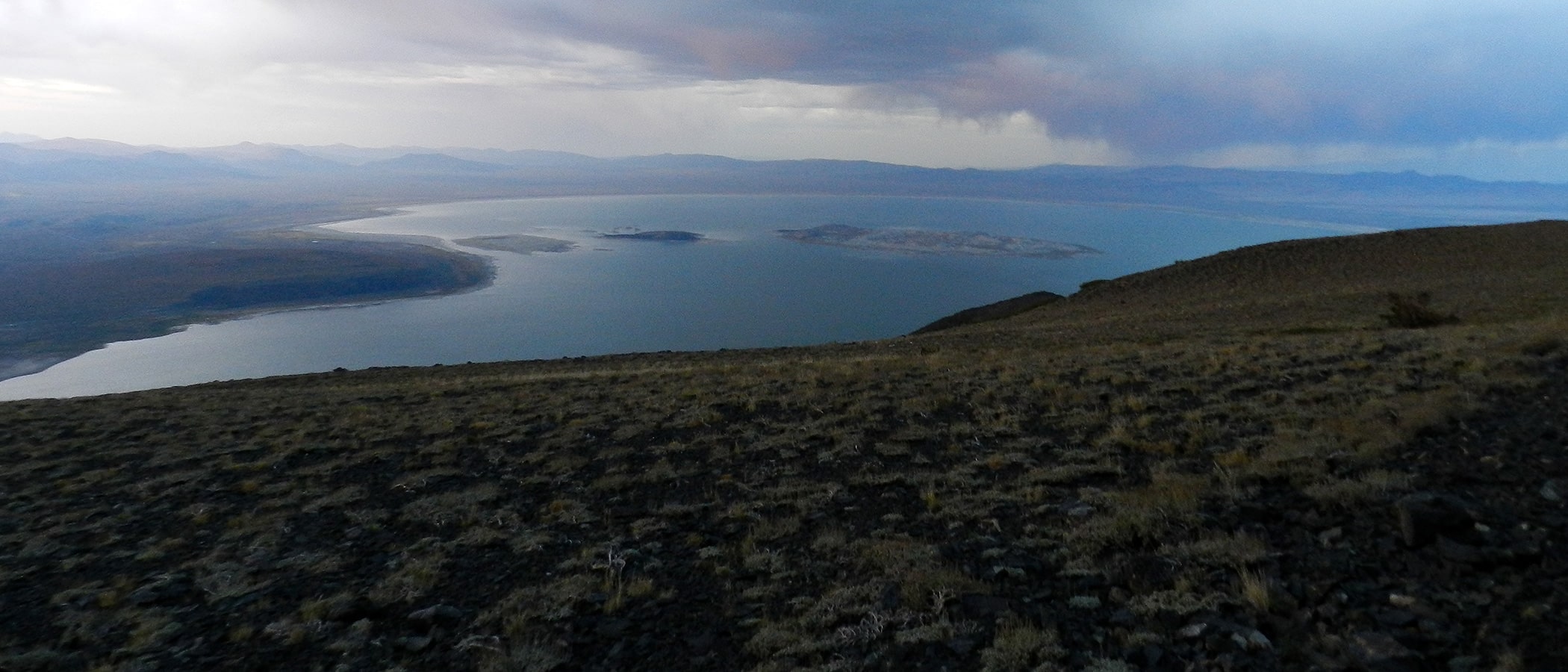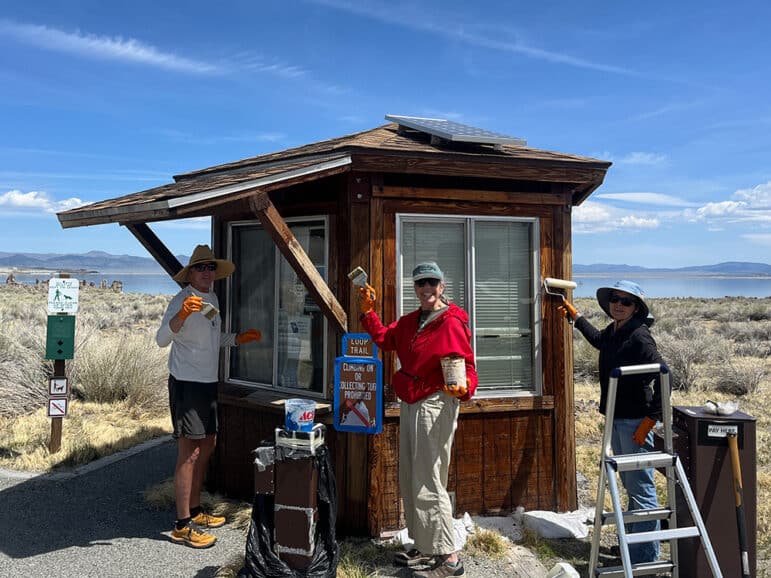
Mono Basin and Eastern Sierra’s vast public lands lose federal employees and essential services
Earlier this year the Trump Administration slashed staffing of federal agencies, including those that manage federal lands around the country and in California and the Eastern Sierra. Nationwide, the Administration has cut ten percent of the US Forest Service workforce.
The Inyo National Forest, home to Mono Lake and the third largest National Forest in California, covering nearly two million acres, has lost positions up and down the agency from maintenance positions to wildlife biologists to recreation staff. The Inyo has long suffered from declining budgets and resource allocations, and the agency was stretched thin before the firings, buyouts, and voluntary early retirements. Now, with the recent loss of permanent staff in addition to the ongoing freeze on all seasonal staff hiring, the Eastern Sierra will experience a year entirely without wilderness rangers, trail maintenance staff, off-highway vehicle rangers, and interpretive and front desk staff at visitor centers.

Cuts may impact visitors’ experience
The loss of staffing will mean reduced resource protection, recreation services, maintenance, and visitor center services. The employee reductions and funding restrictions could result in the reduction of essential services such as maintenance and cleaning of trailhead bathrooms, trash removal, and maintenance of buildings, trailhead signs, kiosks, and other Inyo infrastructure.
In recent years, the Inyo’s partner organizations, including Mono County, have stretched to pay for placement and pumping of portable toilets at trailheads and popular visitor sites around the forest. The Mono Basin National Forest Scenic Area Visitor Center currently has only one Inyo National Forest employee available to keep the building open. Mono Lake Volunteers and staff from California State Parks, the National Park Service, Sierra Forever, and the Mono Lake Committee will help staff the Visitor Center; however, the ability to keep it open through this summer and fall, plus provide the same level of clean and functioning visitor services compared to past years, is uncertain.
Spending limitations delayed Visitor Center opening
This spring, the Mono Basin Visitor Center fire alarm panel failed—a sophisticated, costly piece of equipment that is essential for personnel and building safety. Unfortunately, the federal administration’s cuts have restricted the Inyo from spending above a specific threshold and hamstrung its ability to fully contract out the much-needed repairs. The Inyo’s cooperating non-profit partner, Sierra Forever, paid a portion of the total contract cost—helping to implement a solution that allowed a workaround for federal spending limitations that would otherwise have prevented the Visitor Center from opening and meeting basic building safety requirements.
Agencies cope under strain
Mono Basin seasonal firefighter jobs have not been cut and the number of functioning interagency engines and crews in the Mono Basin appears to be consistent with last year. However, the number of engines and crews on the rest of the Inyo is reduced compared to earlier years. Regardless, the Inyo is implementing long-planned prescribed burns, including up to 2,193 acres of Jeffrey pine forest in the Mono Lake and Mammoth Ranger Districts.
The National Park Service, including Yosemite National Park, has also experienced the firing of seasonal and probationary employees, staff buy-outs, and early retirements. Seasonal staff firings were eventually reversed for those who had not already moved on, but the staff reductions have brought chaos and a loss of institutional knowledge within Yosemite, including specific maintenance expertise in dealing with things like wastewater system operations in Tuolumne Meadows.
Throughout the Mono Basin and Eastern Sierra, trailheads, park entrances, and visitor centers will all be open, but fewer remaining agency staff will be burdened with a greater workload. Visitors may be coping with longer wait times for permits and entries, as well as more trash, backlogged trail maintenance, fewer serviced facilities, and reduced resource protection.
This post was also published as an article in the Summer 2025 Mono Lake Newsletter. Top photo by Sandra Noll.
